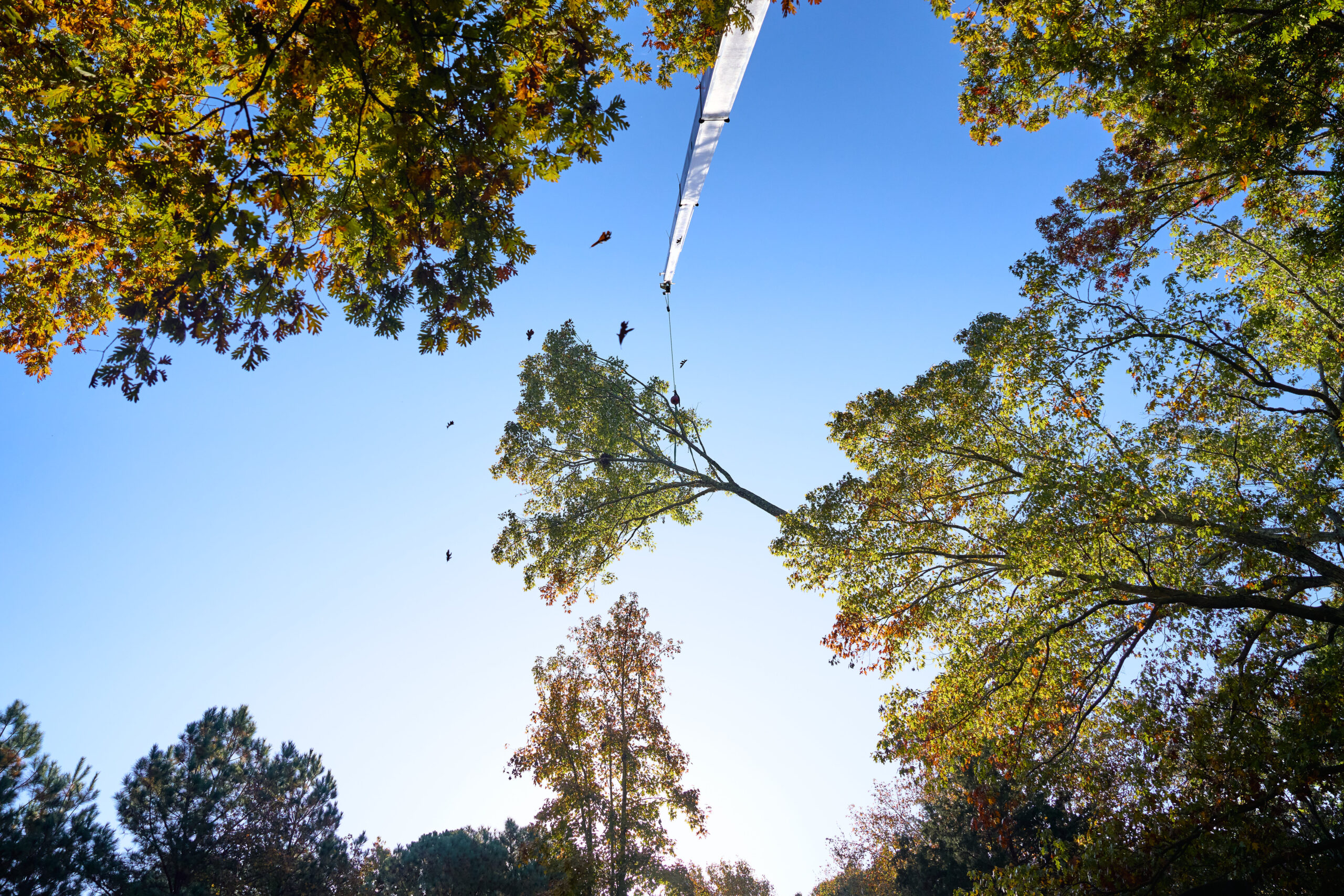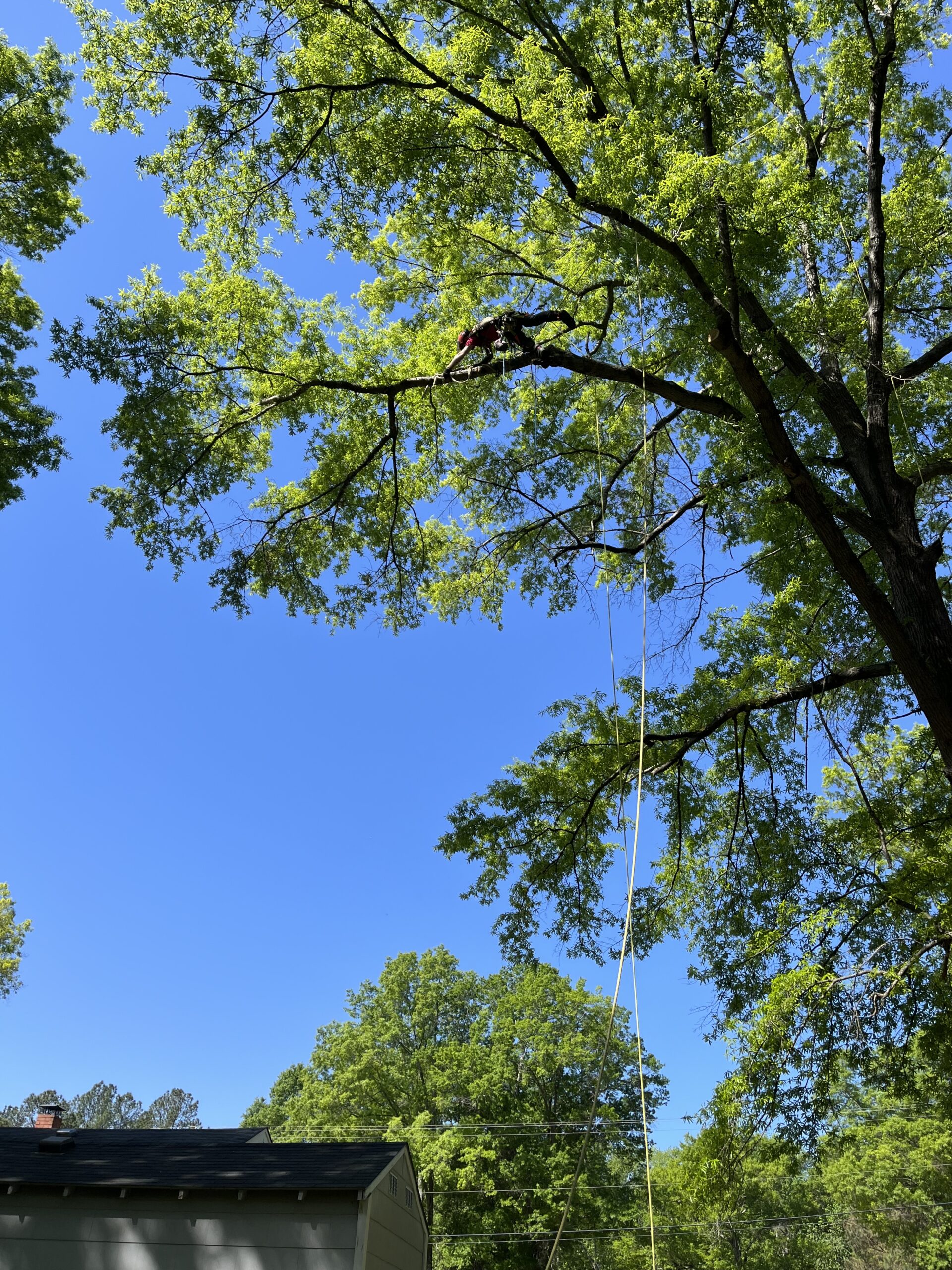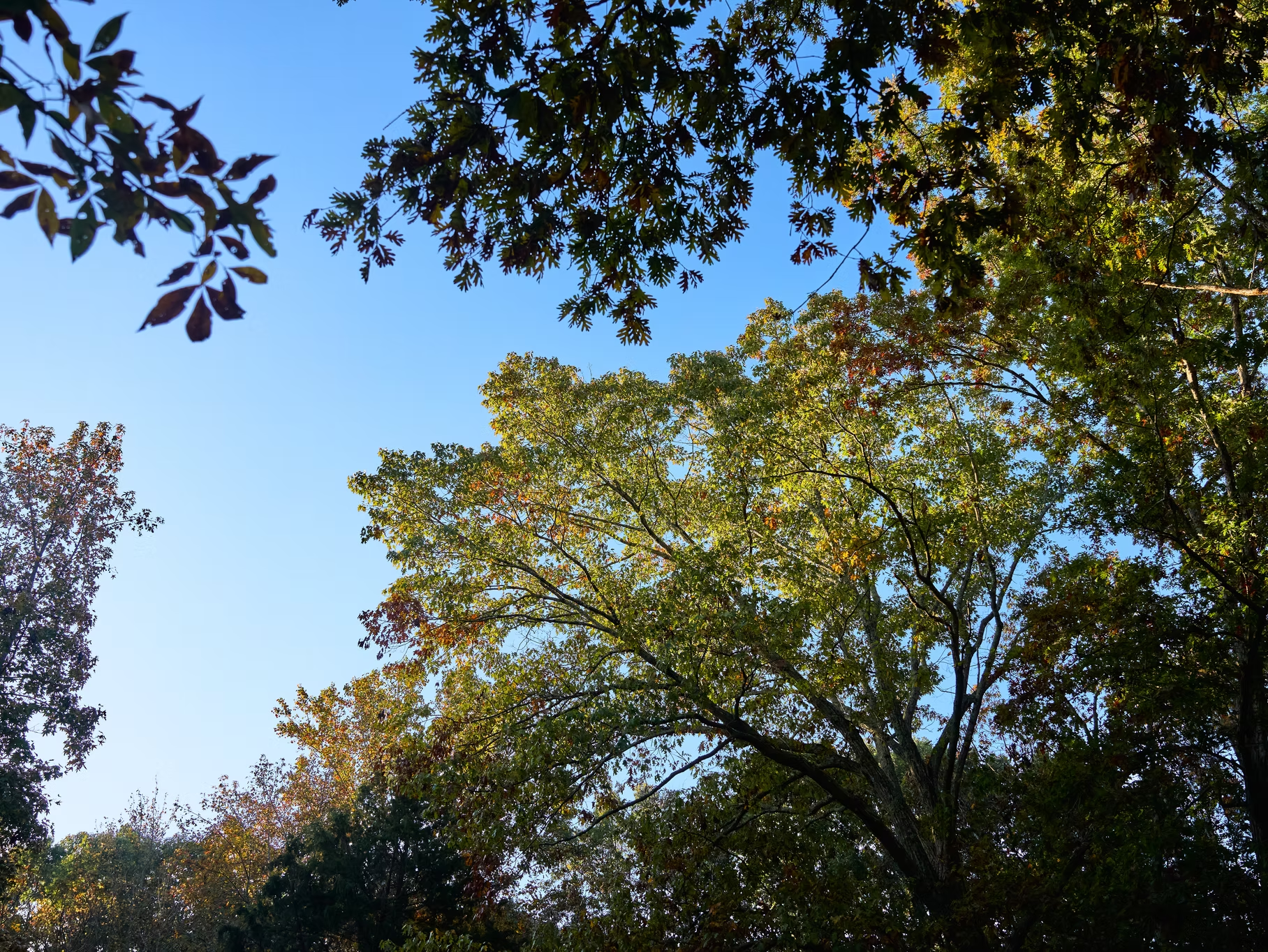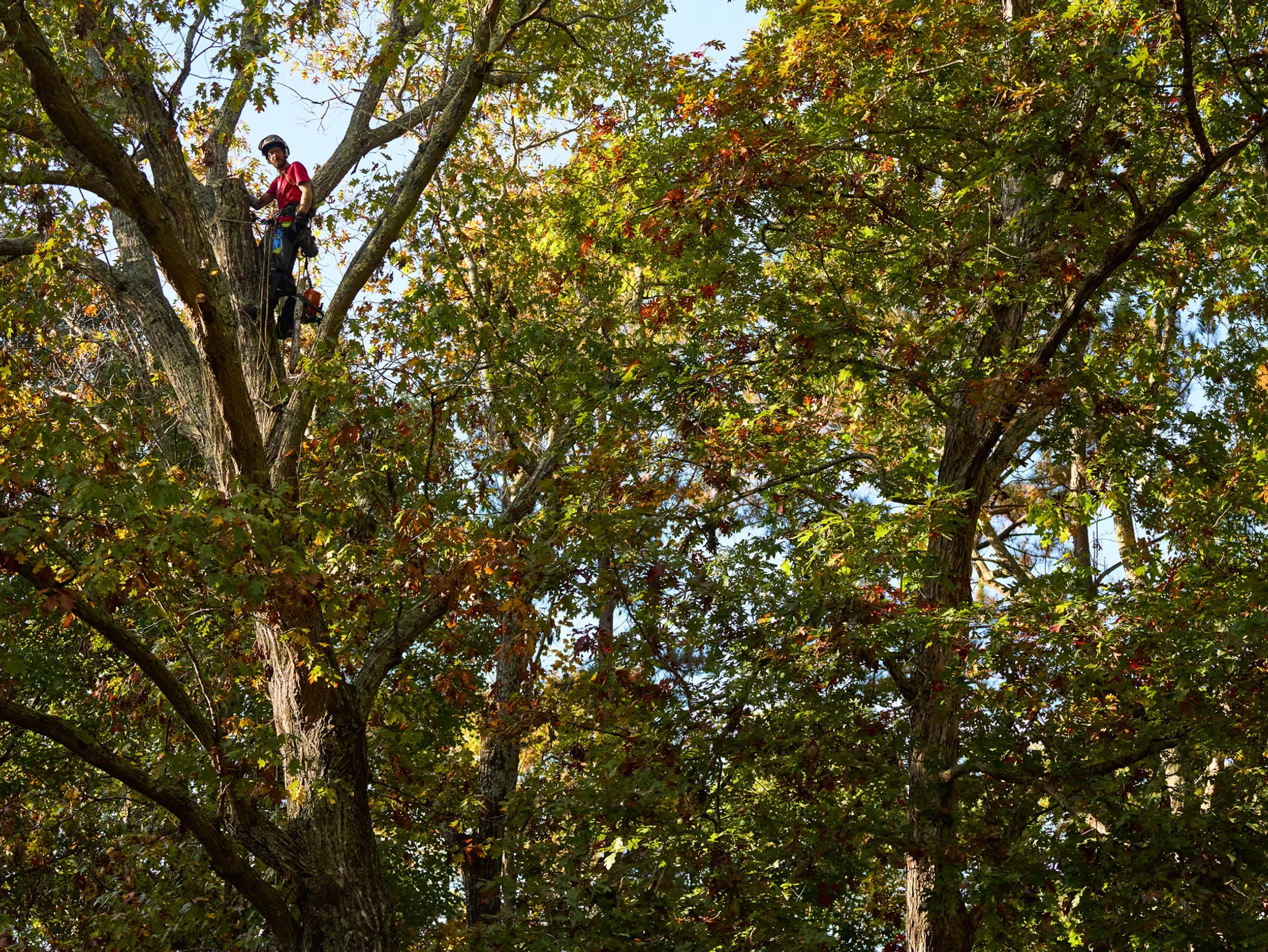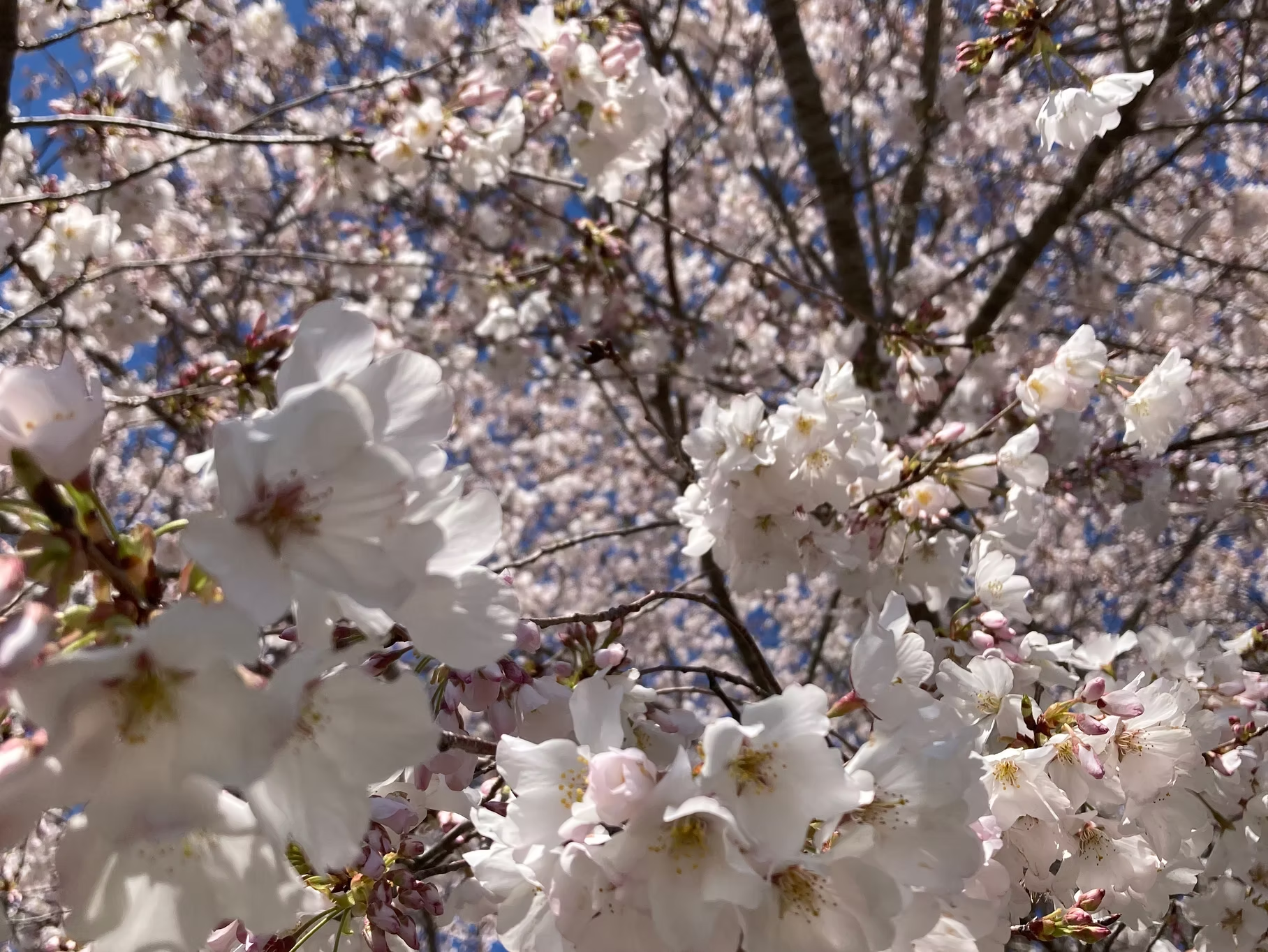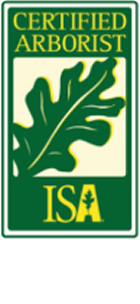Emerald Ash Borer and Its Impact on Ash Trees
Updated on: September 9, 2025
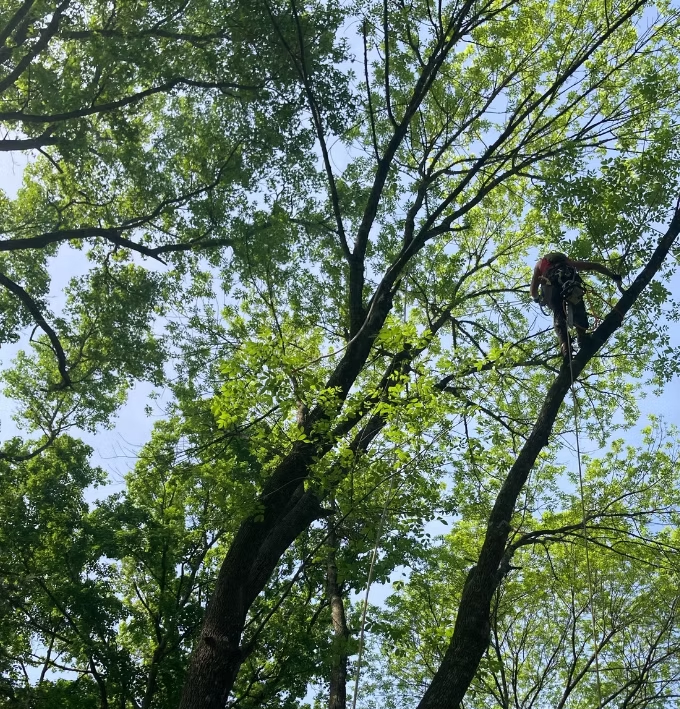
db827b_eab398adada44e48860eb476761045e5~mv2
Ash trees are under attack by an invasive beetle that is killing nearly 100% of untreated ash trees across the Piedmont region of NC. Learn how to identify ash trees, and how to spot the signs of Emerald Ash Borer (EAB).
Identify ash trees on your property and notice signs of Emerald ash borer damage before it’s too late!
Ash trees have either “alligator skin” or “diamond pattern” bark, typically light brown or gray in color (sometimes with white patches). They have compound leaves and opposite branching. Opposite branching is a great identification key, as it is unique in native trees and only seen in in ash, maple, dogwood, horse chestnut, and buckeye. They are very common in our area, especially in low wet areas.

‘ID’-ing Ash with signs of Emerald ash borer (EAB):
- Unhealthy looking foliage
- D-shaped exit holes
- Thinning of canopy
- S-shaped galleries just under bark

The Decline of the Mighty Ash Tree
Ash trees are being decimated all across this country by the invasive emerald ash borer (an invasive Asian beetle). Without the use of pesticides (which are most effective when used preventatively before signs of infestation), EAB is a death sentence for these trees. In areas where this pest first appeared, nearly 100% of (untreated) mature ash trees are now dead. We expect to see the same here in North Carolina within the next few years. In our work, we see many neighborhoods where all the ash trees are already gone.
If you’re wondering “is EAB a concern for my ash yet?” the answer is yes. We’ve treated ash trees and removed dead/dying ash trees in Durham, Chapel Hill, Carrboro, Hillsborough, Mebane, Saxapahaw, Cary…you name it. This pest is an issue across all of North Carolina and most of the United States where ash trees grow at this point.
We are on the edge of a historical event for arboriculture, and a major shift in the balance of our country’s forests and natural areas. Much like the loss of the American chestnut to chestnut blight in the first half of the 1900’s, the tragic tale of our native ash trees will forever include Emerald ash borer.
What should I do about my ash tree with Emerald ash borer?
Deciding whether to treat or remove an ash tree on your property is a personal and often complicated matter.
- Do ongoing costs of treatment and benefits of saving the tree outweigh the one-time removal cost and unfortunate loss of the tree?
- Is it a direct threat to your home if you choose to let it die in place?
- Is it best to just let nature run its course and enjoy the tree for any remaining time?
- What about the drawbacks of pesticide use (the effects on the tree, the environment, any beneficial insects, etc.)?
- Is tree removal the best option in my case? Is the tree either too far declined or is tree removal more cost-effective?
There is a lot to consider.
If you think you may have ash trees on your property, consult with a local arborist! An arborist can help you make an educated decision and discuss your options in depth. Don’t wait- let us help you with your ash trees!

Sosha
She is the Owner, Operator, and an ISA Certified Arborist with expertise in everything from plant health to administrative management. A true "wearer of many hats," her dynamic life doesn't stop when the workday ends. A professional MMA fighter, banjo player, and artist, she is living proof that you can be both tiny and mighty.
Recent Posts
Local Expertise. No Sales Pitch.
We’re local tree enthusiasts who care about the health of North Carolina’s trees – and our community. You’ll get
honest advice, thoughtful recommendations, and zero pushy sales tactics.
We’re local tree enthusiasts who care about the health of North Carolina’s trees – and our community. You’ll get honest advice, thoughtful recommendations, and zero pushy sales tactics.
Hazardous trees don’t wait. We offer financing options and flexible scheduling so you can
take care of the problem now, keeping your property and family safe.


